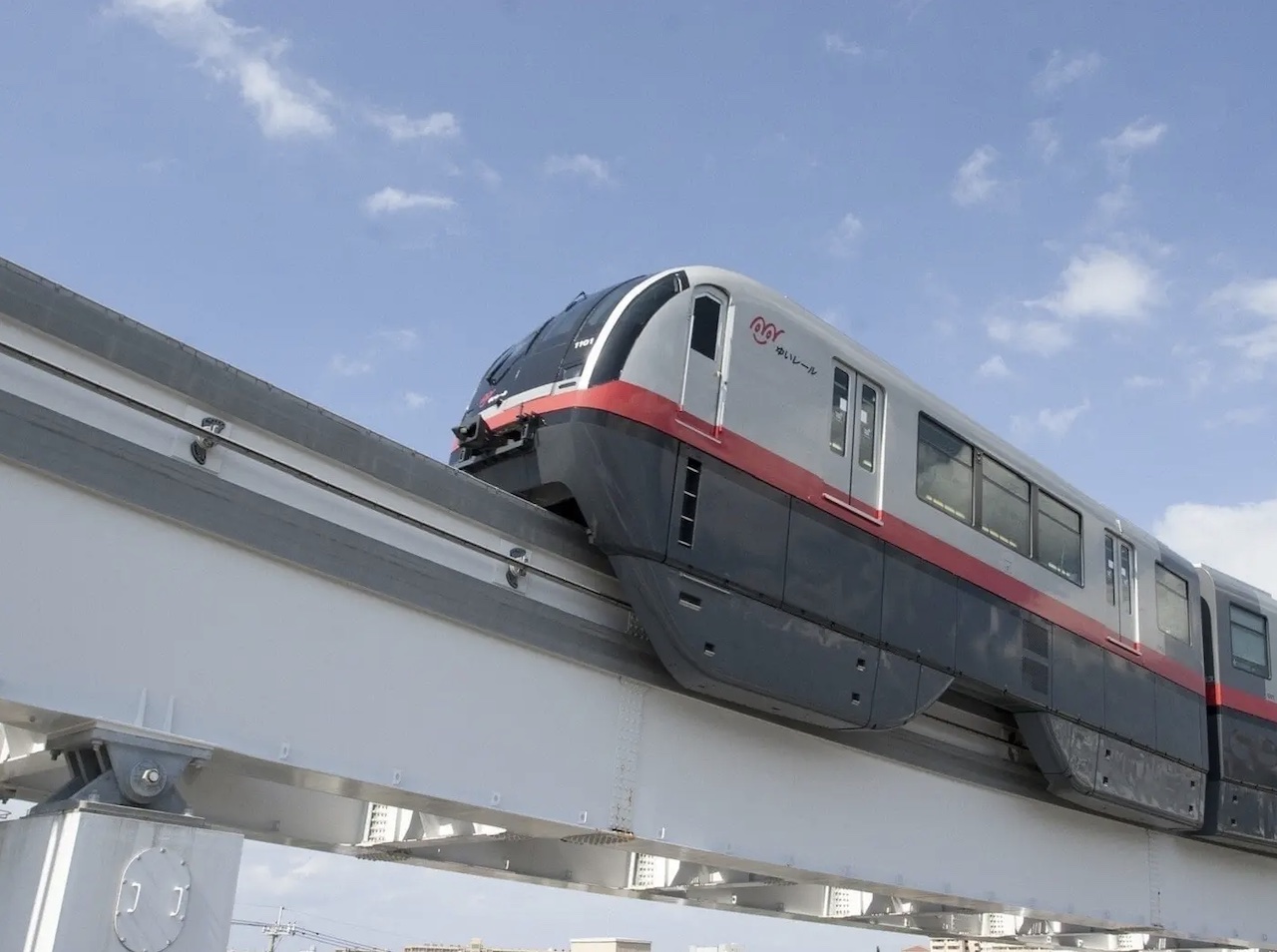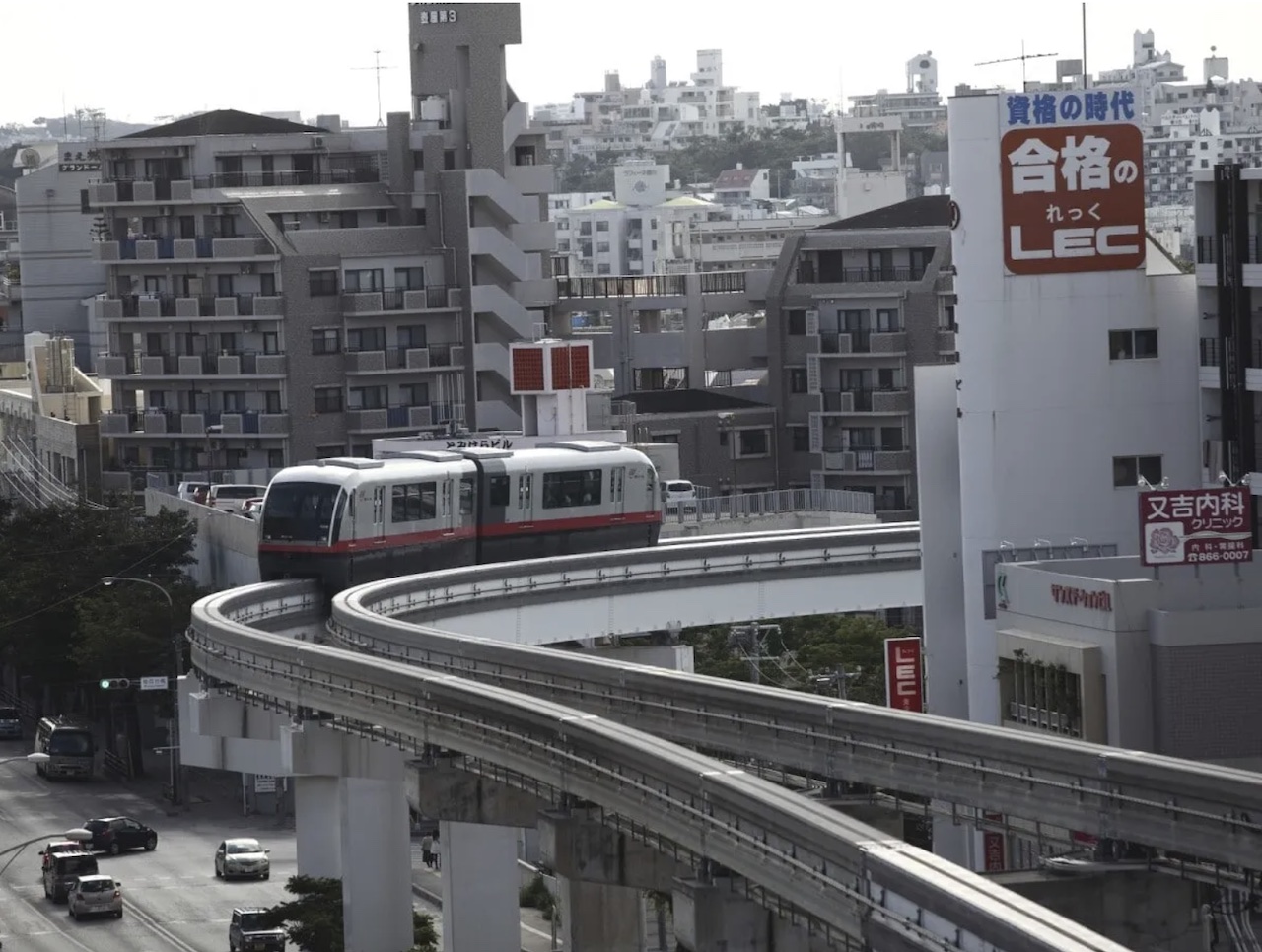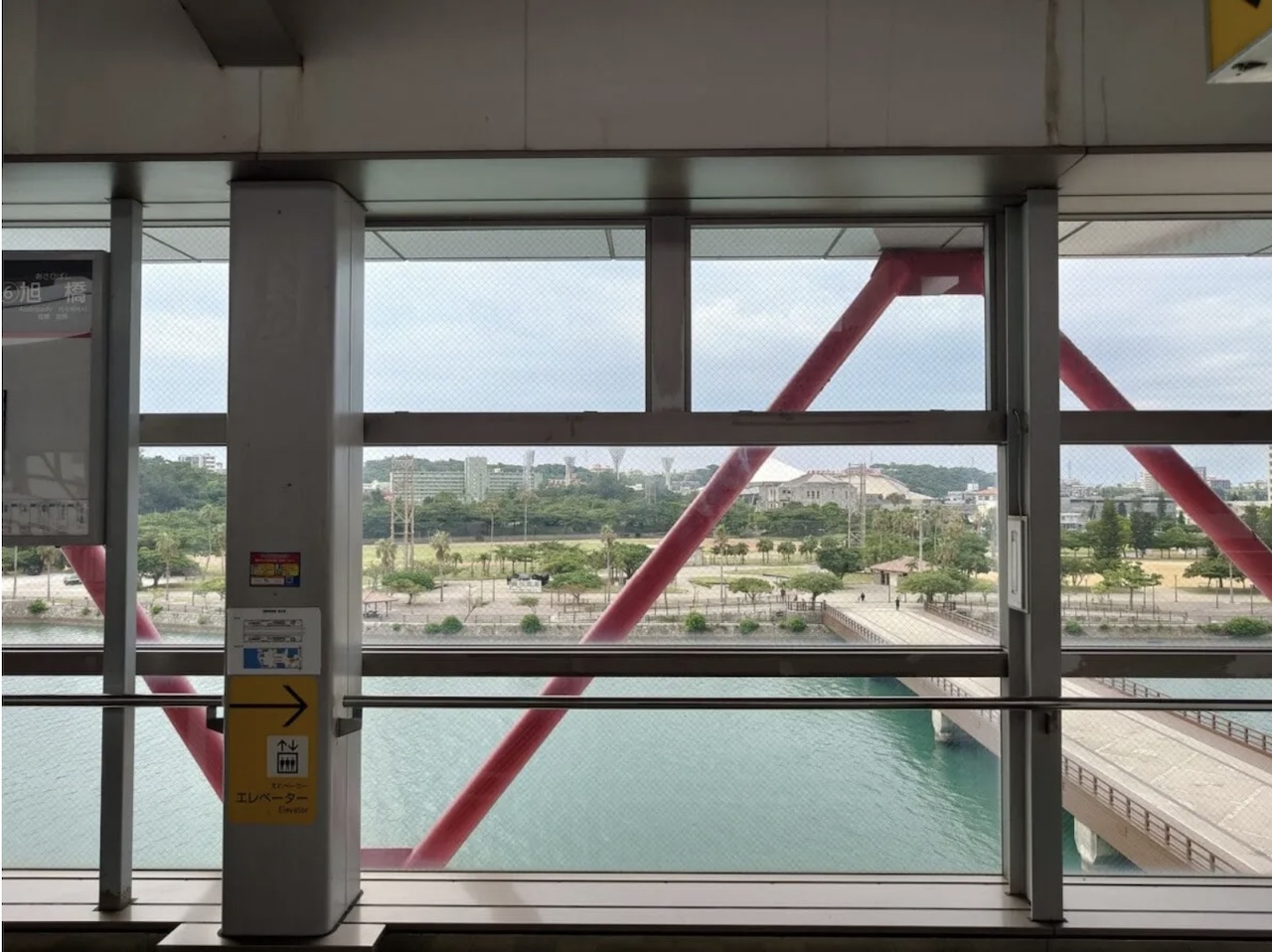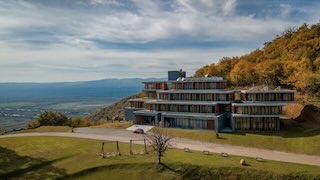NAHA, Feb 08 (News On Japan) - The Okinawa Urban Monorail, known as "Yui Rail," is the only monorail in Okinawa. While it's enjoyable to ride it as a mode of transportation, the "stunning views of Okinawa" from the train windows come highly recommended. Let me, a local resident, take you on a journey aboard the Yui Rail to these beautiful spots.

The Yui Rail, Okinawa's only monorail system, connects Naha Airport Station to Tedako-Uranishi Station. As of 2023, the monorail is celebrating its 20th anniversary and has introduced new three-car trains, making it even more convenient for users. The Yui Rail is not only essential for accessing key tourist destinations in Naha, such as Naha Airport, Kokusai Street, and Shuri Castle, but it also serves as an important means of daily transportation for locals. The unique scenery visible from the train windows encapsulates the charm of everyday life in Okinawa.

From Naha Airport Station to Makishi Station, one can observe various sights. Between Akamine Station and Oroku Station, as the train rounds a large curve, on the right side of the forward direction, the display area of the Japan Air Self-Defense Force Naha Base can be seen. Once you arrive at the airport and board the Yui Rail, make sure to check this out first.
Moving on, between Oku-Yama Park Station and Tsubogawa Station, on the left side of the forward direction, the Kokuba River flows, with Oku-Yama Park in the background. The pleasant view can also be enjoyed from the platform of Tsubogawa Station, so consider alighting here for a moment.
Furthermore, between Tsubogawa Station and Asahibashi Station, pay attention to the area around the large curve. In the distance, on the left side, the Naha Port facilities (formerly Naha Military Port) come into view. Depending on the timing, you might see warships docked there.

In the heart of Naha, from Kencho-mae Station to Makishi Station, the area is bustling with buildings, hotels, and frequented by tourists. Just before entering Makishi Station, Kokusai Street is visible on the right side. In addition to Makishi Station, Kokusai Street can also be accessed from Miebashi Station and Kencho-mae Station.
From Asato Station to Shuri Station, one can appreciate the residential scenery of Naha. The view of concrete buildings closely packed together with the blue sea in the distance is distinctive to Okinawa. Especially noteworthy is the stretch between Furujima Station and Shiritsubyoin-mae Station, where a large curve offers a view over the residential area extending to the horizon. If the timing is right, the sunset from Shiritsubyoin-mae Station is also a beautiful sight to behold.
Near Shiritsubyoin-mae Station is Sueyoshi Park, lush with subtropical trees and a sacred site steeped in Ryukyu history. Before arriving at and after departing from Shiritsubyoin-mae Station, look to the left side to see the expanse of green forest. This is Sueyoshi Park, Naha's largest park. Within the park lies Sueyoshi Shrine, one of the Ryukyu Eight Shrines and a designated national historic site. Look for the small shrine nestled in the green forest from the train window.
The entrance to this mystical forest park is about a 10-minute walk from Shiritsubyoin-mae Station, but the journey to Sueyoshi Shrine can be quite a trek. Those who wish to visit are advised to wear comfortable shoes and clothes suitable for walking.
From the next station, Gibo to Shuri Station, look to the right side in the direction of travel. Beyond the residential buildings, Shuri Castle Park comes into view. Although the main hall was lost in the 2019 fire and is no longer visible, the park's ramparts and other structures can still be seen. Shuri Castle Park's Shureimon Gate is about a 10-minute walk from Shuri Station.
From Ishimine Station to Tedako-Uranishi Station, this section was extended in 2019. As you travel from Naha City to Urasoe City, the local townscapes become more apparent from the train windows. However, what might surprise you is the area around Kyozuka Station, which is entirely surrounded by graves, including right in front of the station platform. This unique Okinawan burial style may be quite different from what is seen on the mainland.
Finally, the end of the line, Tedako-Uranishi Station. This station is unique in that the train briefly goes underground before arriving. From the rear of the platform, take a moment to view the current "end of the Yui Rail."
The journey from Naha Airport Station to Tedako-Uranishi Station takes 37 minutes. One of the charms of the Yui Rail is the variety of landscapes you can see in just this short time. For those who want to fully enjoy the scenery, sitting in the front row with a view over the driver's shoulder or in the rear to watch the scenery recede is recommended.
Additionally, if you purchase a free pass ticket, you can freely alight at any station that catches your interest, which is quite convenient.
Source: MDPR















